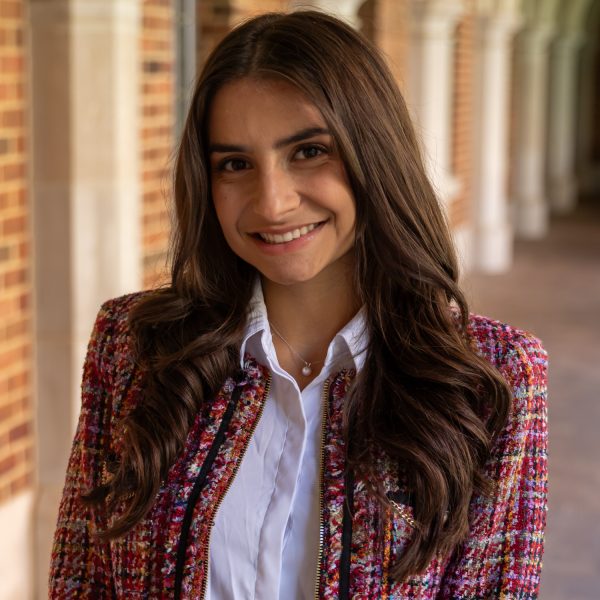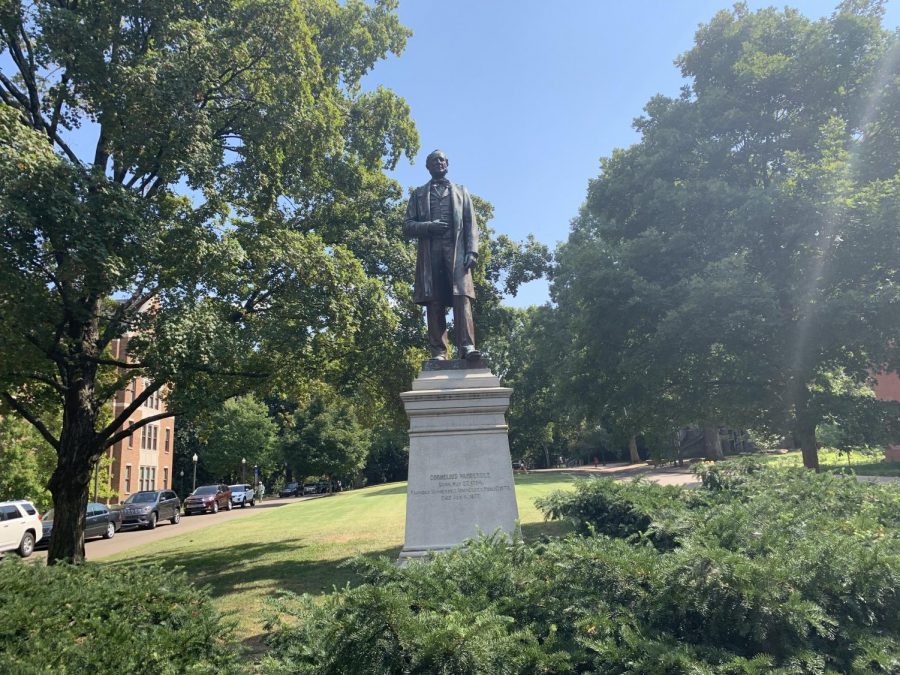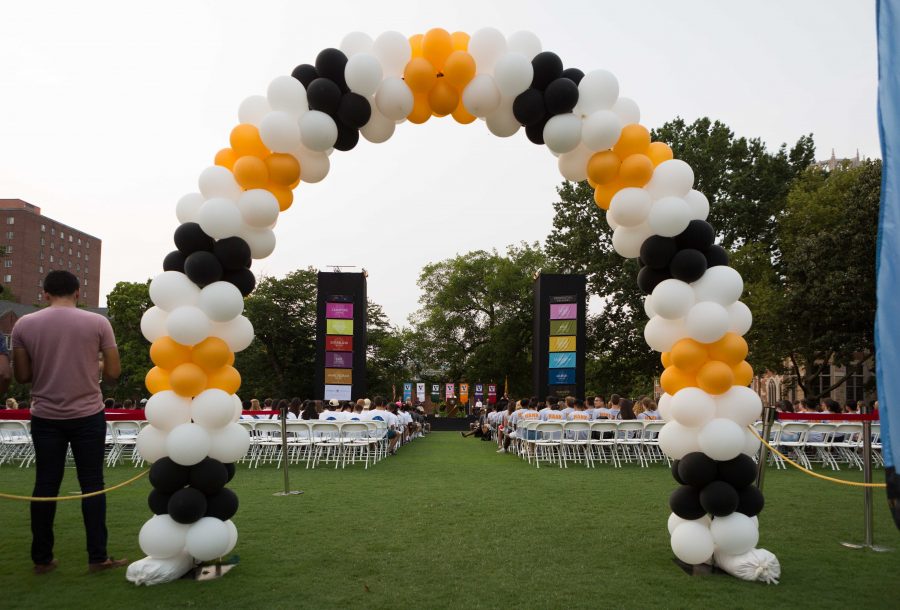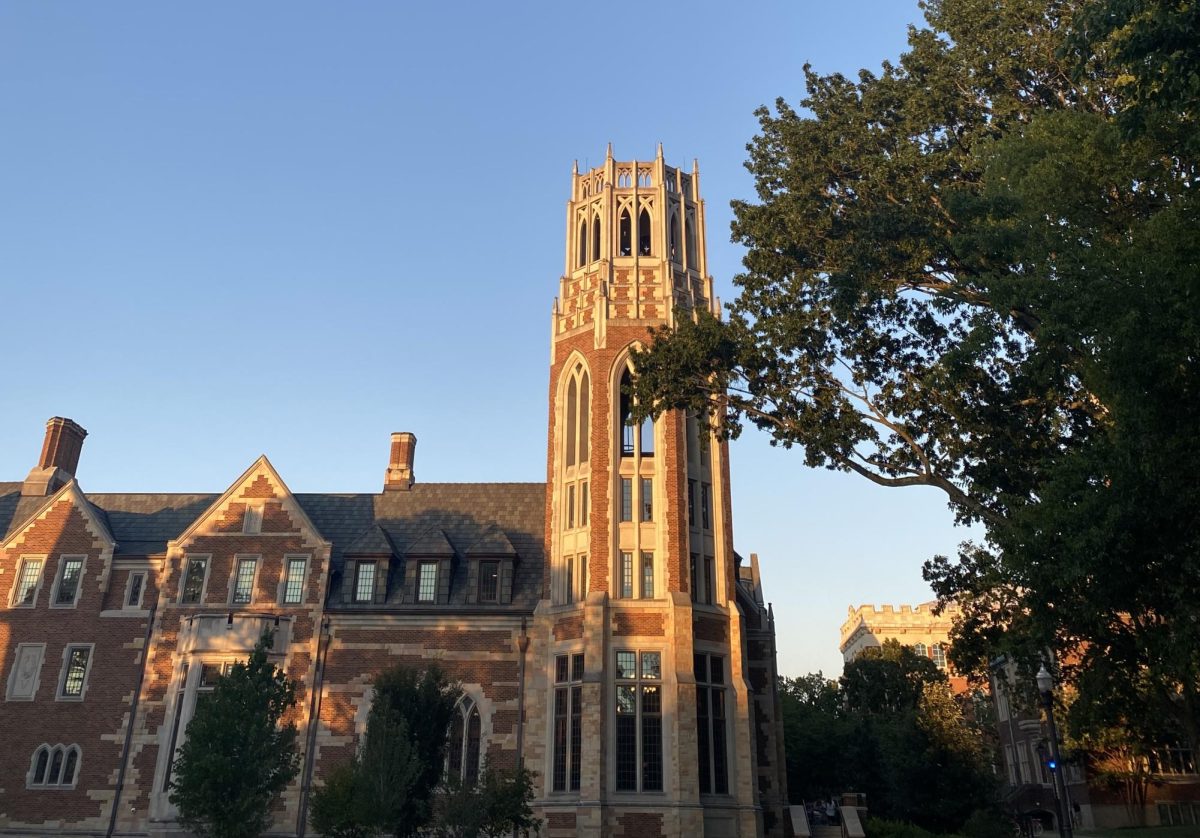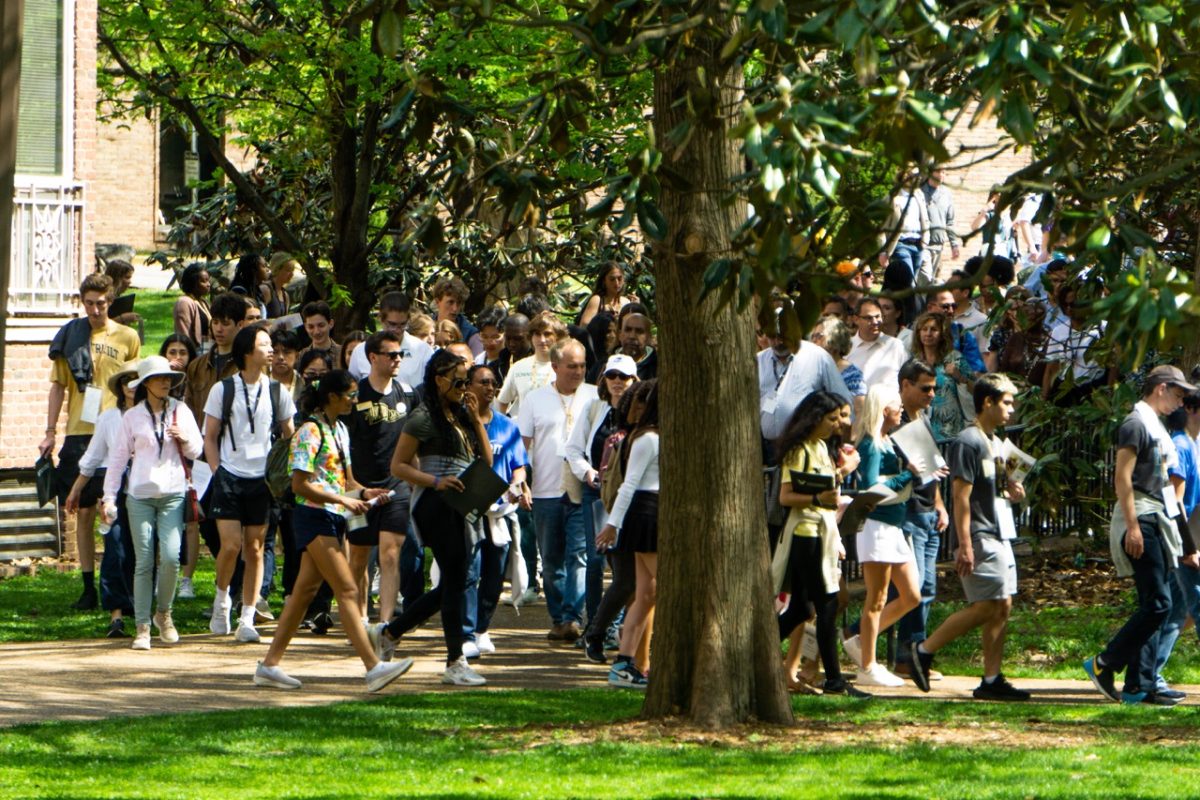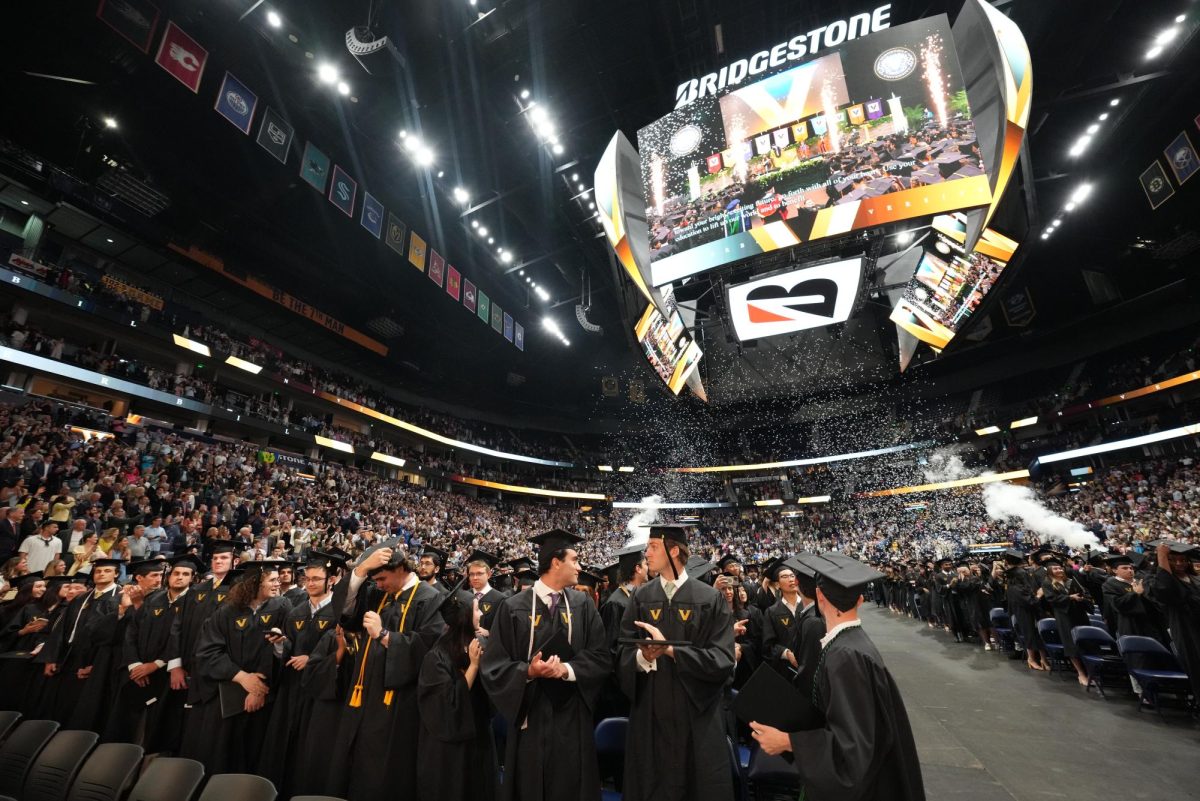Vanderbilt welcomed 1,763 students to the Class of 2027 on March 28 through the regular decision cycle. The RD and overall acceptance rates were both the lowest in university history at 4.2% and 5.6%, respectively.
Students expressed excitement and gratitude about joining the Class of 2027 and making Nashville their home next fall. Around 1,100 accepted students and families visited Vanderbilt’s campus on April 15 for Anchor Day — Vanderbilt’s accepted students day — where they toured campus, spoke to students and faculty and learned more about Vanderbilt.
The Hustler found discrepancies between admissions statistics posted on the Vanderbilt Admissions Blog and the Common Data Set for the Classes of 2026 and 2025. The Common Data Set is a standardized set of information voluntarily released by many universities.
Victoria Robson, director of analytics and enrollment strategy, explained that first-year admissions statistics for each incoming class are not finalized until the fall after RD decisions are released due to students taking gap years and student-athletes offered late admission. Other schools also experience such fluctuation. This piece reflects the most updated statistics as of publication.
Vanderbilt admission rates
A total of 2,645 students were accepted to the Class of 2027 out of 47,120 applicants, with 882 students — 15.7% of early decision applicants — being admitted through early decision I and II. Dean of Undergraduate Admissions Doug Christiansen said around the same number of students applied EDI and EDII, but declined to offer the specific acceptance rates for each ED cycle. For the Class of 2026, the EDI and EDII rates were erroneously released by the Office of Undergraduate Admissions, with 24.1% of EDI and 10.3% of EDII applicants being admitted. The EDII cycle received around 300 fewer applicants than EDI that year.
Christiansen previously told The Hustler that Vanderbilt’s decreasing acceptance rates are simply a function of the university receiving increasing numbers of applications. However, Vanderbilt accepted approximately 200 fewer applicants to the Class of 2027 than to the Class of 2026 and around 500 fewer applicants than the Class of 2025 — not including accepted waitlisted students — despite receiving a similar number of applicants. According to the Common Data Set, the first-year class size has stayed stagnant for at least the last 10 cycles at around 1,600 students. Data prior to 2013 is unavailable.
Christiansen explained that Vanderbilt has begun accepting fewer students due to a rising yield of admitted students. The Common Data Set shows an approximate 25% increase in yield over the last 10 years.
In the past three years, the number of ED applicants has risen by around 500 and the number of RD applicants has fallen by around 600. Christiansen said this relationship correlates with Vanderbilt’s growth in prestige.
“Vanderbilt’s name is just getting larger and larger,” Christiansen said. “People know Vanderbilt and the quality of students that come here.”
Waitlist, deferral and transfer admissions processes
Christiansen said around 8% of the Class of 2027 will come from the waitlist. He declined to state the number of students who were waitlisted, stating that it misrepresents a student’s chance of being accepted off the waitlist. Christiansen added that students are admitted off the waitlist according to the school to which they applied and, in some cases, their intended majors.
For the Class of 2026, 221 students were admitted off the waitlist, 40 more than for the Class of 2025. On the other hand, over 450 students were admitted from the waitlist to both the Class of 2024 and the Class of 2023. The first time the waitlist acceptance rate was published was for the Class of 2018, in which 4.6% of students who accepted a waitlist spot were accepted. That year, waitlisted applicants encompassed 13% of the class.
“Our waitlist students today would be like our Cornelius Vanderbilt scholars four years ago,” Christiansen said. “They are fabulous students; we just simply are so competitive.”
Christiansen also stated that around 400 students were deferred from ED to RD, a process that began at Vanderbilt with the Class of 2026. That year, Christiansen said “a small number” of students were deferred with a “solid portion” of deferred students being admitted. He said the number of deferred students who were admitted to the Class of 2027 will not be final until the fall.
Last year, 16.6% of transfer applicants to the Classes of 2025 and 2024 were admitted. Christiansen said there is a higher admissions rate for this group than first-year admission rates due to the applicant pool being smaller. However, like first-year admissions, transfer acceptance rates have been dropping as the number of applicants also increases.
“[Transfer students’] GPAs are at the same level [as first-year acceptees],” Christiansen said.
According to the Office of Undergraduate Admissions website, Vanderbilt plans to admit 220-240 total transfer students to the Classes of 2026 and 2025 this spring, with the majority of students being admitted to the Class of 2026. Christiansen added that transfer applications are read after first-year decisions are released. Transfer decisions will be released on a rolling basis beginning in late April and continuing through mid-June.
Comparisons to peer institutions
Vanderbilt’s peer institutions in the U.S. News Best College rankings also experienced decreases in acceptance rates.
Out of the four schools tied with or ranked one slot above or below Vanderbilt, Vanderbilt received the second-most applicants to the Class of 2027, with Brown University receiving the most at 51,302 students. Vanderbilt had the median overall acceptance rate among these five schools, behind Dartmouth and Brown, and the second-lowest RD rate, behind Brown.
Federal law and college admissions
Christiansen spoke of the geographic diversity of the applicants to the Class of 2027, with students applying from 152 different countries and students of 61 and 29 different citizenships being admitted RD and ED, respectively. The Common Data Set states that an applicant’s geographical residency is “considered” — compared to being “very important,” “important” and “not considered” — in the admissions process.
Christiansen said the geographic distribution of the applicant pool was not affected by Tennessee’s change in abortion laws following Dobbs v. Jackson Women’s Health Organization (2022).
“If there are reproductive needs that aren’t available here, we share and talk about that [with prospective students and about] the support mechanisms on campus,” Christiansen said. “There have been students and students’ parents who have written [to us] like ‘We’re not sending our child there’ or ‘I don’t want to come there,’ but it is very minimal.”
The Supreme Court is also set to make a decision regarding universities’ ability to use affirmative action in college admissions by June 2023. Christiansen said the Office of Undergraduate Admissions is working with Vanderbilt’s General Counsel and national organizations — such as College Board, the Admissions Diversity Collaborative and the National Association of College Admissions Counselors — to prepare for a potential outlawing of affirmative action.
Vanderbilt “considers” race and ethnicity in its admissions, according to the university’s Common Data Set. The university signed an amicus curiae in 2018 in support of Harvard and the use of affirmative action in admissions in Students for Fair Admissions Inc. v. President & Fellows of Harvard College (2023).
Christiansen emphasized the importance of diversity in education.
“[If affirmative action is outlawed,] we’ll still have a holistic admissions process; we’ll still look at context; we’re still gonna look at the whole student,” Christiansen said. “We care deeply about diversity, and we’ll do everything we can to continue that, but we will need to comply with the law.”
Standardized test scores
Christiansen emphasized that standardized test scores are “truly optional” at Vanderbilt; not submitting scores does not negatively affect applicants in the admissions process. He said the percentage of applicants who submitted test scores — 53.7% — is “only a few percentage points” different from the percentage of admitted students who did so.
“It’s one piece of information,” Christiansen said. “We don’t have any cut lines or cut-offs.”
The middle 50% ranges of SAT scores for admitted ED students who submitted scores were 10 points below that of admitted RD students who submitted scores.
Christiansen added that Vanderbilt would be deciding in early 2024 whether test scores will remain optional beyond the Class of 2028.
Accepted student reactions from RD pool
The Hustler spoke to students who were accepted to Vanderbilt via the RD cycle.
Shreya Ramalingam, who recently committed to Vanderbilt, is from St. Louis, Missouri. She intends to major in economics and/or public policy studies and was drawn to Vanderbilt due to the quality reputation of these programs.
“Opening my Vanderbilt decision was probably my most nerve-wracking one because it was my dream school and the one that I was truly imagining myself in,” Ramalingam said. “I quite literally fell down the stairs when I went to tell my parents. It feels really neat and fulfilling to be accepted into a university that I feel really matched to after years of building and growing my creativity and leadership.”
Calling her college decision a “no-brainer,” Ramalingam said she is looking forward to being closer to the city than her home is and meeting others with similar goals as her. She added that she wants to get involved in Model UN or mock trial, musical performance — including dance and piano — and volunteering in greater Nashville.
“I’m really just so excited to find new people who I can grow from and laugh with,” Ramalingam said.

Merin Manske is also committed to Vanderbilt and intends to major in biomedical engineering in the School of Engineering. She is originally from Rochester, New York, and says she is excited to explore Nashville in the fall. She mentioned how Scott Coberly, a junior tour guide, solidified her interest in Vanderbilt.
“I had the best tour guide last summer who talked a lot about how collaborative Vanderbilt is and how amazing the community on campus is,” Manske said. “This is exactly what I was looking for in a school.”
Manske stated that she didn’t expect to be accepted to Vanderbilt after being deferred from EDII. She said she is looking forward to hopefully getting involved in the Society of Women Engineers and Engineers Without Borders.
Aum Dhruv is from Fort Myers, Florida, and is still deciding which school to attend next fall. If he comes to Vanderbilt, he intends to major in communication of science and technology in the College of Arts and Science. He spoke highly of Vanderbilt’s social innovation initiatives and collaborative student body. A MOSAIC and Chancellor’s Scholar, Dhruv said he was “incredibly grateful” to be admitted to Vanderbilt.
“I’d love to get involved with the Vanderbilt Innovation Council and continue inventing and advocating for assistive technology, while also teaching the manufacturing skills I’ve been blessed to learn through Maker Club,” Dhruv said.

Rachel Sobers plans to major in philosophy and minor in creative writing in the College of Arts and Science. A Curb Scholar, she said the “broad” nature of the Department of Philosophy led her to Vanderbilt. Next fall, she will join her brother Jacob in Nashville, who is a student at Vanderbilt Law School.
“Vanderbilt has everything that I need to focus in one discipline but also discover and develop new interests,” Sobers said.
Sobers said she hopes to join Vanderbilt Run Club, University Catholic or Vanderbilt RUF and Greek Life. She also plans to engage in community service on and off campus.
“I’ve run track for most of my life, and I love to spend time exercising with friends and supporting meaningful causes through running,” Sobers said.





